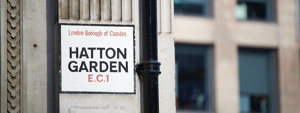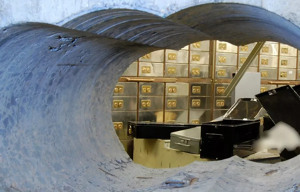Tavex uses cookies to ensure website functionality and improve your user experience. Collecting data from cookies helps us provide the best experience for you, keeps your account secure and allows us to personalise advert content. You can find out more in our cookie policy.
Please select what cookies you allow us to use
Cookies are small files of letters and digits downloaded and saved on your computer or another device (for instance, a mobile phone, a tablet) and saved in your browser while you visit a website. They can be used to track the pages you visit on the website, save the information you enter or remember your preferences such as language settings as long as you’re browsing the website.
| Cookie name | Cookie description | Cookie duration |
|---|---|---|
| tavex_cookie_consent | Stores cookie consent options selected | 60 weeks |
| tavex_customer | Tavex customer ID | 30 days |
| wp-wpml_current_language | Stores selected language | 1 day |
| AWSALB | AWS ALB sticky session cookie | 6 days |
| AWSALBCORS | AWS ALB sticky session cookie | 6 days |
| NO_CACHE | Used to disable page caching | 1 day |
| PHPSESSID | Identifier for PHP session | Session |
| latest_news | Helps to keep notifications relevant by storing the latest news shown | 29 days |
| latest_news_flash | Helps to keep notifications relevant by storing the latest news shown | 29 days |
| tavex_recently_viewed_products | List of recently viewed products | 1 day |
| tavex_compare_amount | Number of items in product comparison view | 1 day |
| Cookie name | Cookie description | Cookie duration |
|---|---|---|
| chart-widget-tab-*-*-* | Remembers last chart options (i.e currency, time period, etc) | 29 days |
| archive_layout | Stores selected product layout on category pages | 1 day |
| Cookie name | Cookie description | Cookie duration |
|---|---|---|
| cartstack.com-* | Used for tracking abandoned shopping carts | 1 year |
| _omappvp | Used by OptinMonster for determining new vs. returning visitors. Expires in 11 years | 11 years |
| _omappvs | Used by OptinMonster for determining when a new visitor becomes a returning visitor | Session |
| om* | Used by OptinMonster to track interactions with campaigns | Persistent |
| Cookie name | Cookie description | Cookie duration |
|---|---|---|
| _ga | Used to distinguish users | 2 years |
| _gid | Used to distinguish users | 24 hours |
| _ga_* | Used to persist session state | 2 years |
| _gac_* | Contains campaign related information | 90 days |
| _gat_gtag_* | Used to throttle request rate | 1 minute |
| _fbc | Facebook advertisement cookie | 2 years |
| _fbp | Facebook cookie for distinguishing unique users | 2 years |
The Infamous Hatton Garden Safe Deposit Heist

Nestled in London’s Borough of Camden, Hatton Garden stands as a historic symbol of the UK’s diamond and jewellery trade. This area, dating back to the 1700s and named after Sir Christopher Hatton, has evolved from a residential zone into a thriving commercial hub, attracting a plethora of jewellers and craftsmen.
However, its shimmering reputation was starkly contrasted in April 2015, when the Hatton Garden Safe Deposit burglary unfolded. This meticulously executed heist during an Easter Bank Holiday not only shocked the community but also led to significant changes in security measures. Additionally it also unexpectedly boosted local business, eventually becoming a part of the Museum of London’s collection.
This article explores the rich history of Hatton Garden, the dramatic heist, and its lasting impact on London’s criminal and cultural landscape.
Background to Hatton Garden’s Fame

Hatton Garden, in central London’s Borough of Camden, has a rich heritage tied to the UK’s diamond and jewellery trade. Named after Sir Christopher Hatton, a favourite of Queen Elizabeth I, it transformed from a residential area in the 1700s to a commercial hub by the mid-1800s, attracting a surge of jewellers and craftsmen. Today, it is home to nearly 300 jewellery businesses, including over 50 shops.
The area’s legacy as a jewellery centre dates back to the 19th century, with companies like De Beers having had a significant presence there. Not just limited to above-ground shops, Hatton Garden also features a network of underground vaults and tunnels. This has helped in reflecting its importance in the valuable goods trade.
The Hatton Garden Heist

The Hatton Garden Heist, executed over the Easter Bank Holiday weekend in April 2015, stands out as one of the most meticulously planned and daring burglaries in recent history.
The Hatton Garden Safe Deposit, operated by Hatton Garden Safe Deposit Ltd., was a well-known secure storage facility in London’s jewellery quarter, housing an extensive collection of jewels, gold, cash, and precious stones, making it an alluring target for thieves.
Execution of the Heist

The heist was marked by its elaborate planning and execution. The burglars, a group of elderly men skilled in thievery, chose the Easter weekend strategically. They knew that the surrounding businesses would be closed, reducing the risk of detection. They accessed the building by entering through a lift shaft, a method that avoided any noticeable signs of forced entry.
Once inside, the gang faced the formidable task of breaching the vault. They employed a Hilti DD350 industrial power drill, a heavy-duty piece of equipment capable of drilling through the vault’s 50 cm thick walls. This rigorous effort allowed them to create an entry point into the vault.
The Theft
Upon breaching the vault, the burglars were able to access the safe deposit boxes. They worked swiftly to gather their loot, which consisted of a vast assortment of valuables.
The total value of the items stolen was estimated to be up to £14 million. However, in a turn of events reflecting the challenges of such a large-scale theft, only £4.3 million of the stolen goods have been recovered to date.
The sheer scale and audacity of the burglary led to it being described as the “largest burglary in English legal history.”
The Hatton Garden heist not only shocked the local community and the wider public due to its scale and the age of the perpetrators but also raised significant questions about the security of safe deposit facilities in high-value areas.
The incident has since become a part of London’s criminal lore, illustrating the lengths to which criminals will go to secure high-value goods and the evolving nature of security and crime in the modern era.
Aftermath and Security Implications
The aftermath of the Hatton Garden heist had far-reaching implications. It has had implications in both in terms of legal consequences for those involved and the broader impact on security practices in the area.
Legal and Criminal Consequences

- In the wake of the heist, a total of eight gang members were apprehended and subsequently faced legal proceedings, including the most recent ringleader Michael Seed, also known as ‘Basil’.
- The group, consisting of seasoned thieves, received prison sentences for their roles in the burglary.
- These arrests and convictions highlighted the effectiveness of law enforcement in responding to such high-profile crimes, even when the perpetrators are skilled and experienced criminals.
Security Reevaluation
- One of the most significant outcomes of the Hatton Garden heist was the thorough reevaluation of safe deposit security measures in safe deposit facilities.
- This was not just in Hatton Garden but potentially influencing practices nationwide.
- The heist exposed vulnerabilities in what was assumed to be a highly secure storage option.
- In response, many such facilities likely reviewed and upgraded their security protocols.
- Additionally, they incorporated advanced technology and stricter access controls to prevent similar incidents in the future.
Cultural Impact

- Interestingly, the vault that was the centre of this infamous heist has been donated to the Museum of London.
- This gesture signifies the heist’s notable place in London’s rich tapestry of history, particularly its criminal history.
- The inclusion of the vault in a museum exhibit serves as a tangible reminder of the event and offers the public an insight into one of the most daring burglaries in recent times.
Unexpected Boost for Local Businesses
- In an unforeseen twist, some local jewellers in Hatton Garden reported an inadvertent boost in their business following the heist.
- This increase in business could be attributed to the heightened publicity that the area received in the aftermath of the burglary.
- The media coverage and subsequent cultural representations, such as films and documentaries, may have drawn more visitors and potential customers to Hatton Garden, ironically benefiting the businesses in the vicinity.
Overview
The Hatton Garden Safe Deposit Heist of April 2015 stands as a stark contrast to the long-standing prestige of London’s renowned jewellery quarter.
This meticulously executed burglary, leading to the largest theft in English legal history, prompted a profound reevaluation of security in high-value storage facilities.
Beyond its immediate impact, the heist influenced the cultural landscape, with the involved vault becoming a part of the Museum of London and the incident inadvertently boosting local business.
Serving as a vivid example of the evolving dynamics of crime and security, the Hatton Garden heist has etched itself into the fabric of London’s rich and complex history.

















